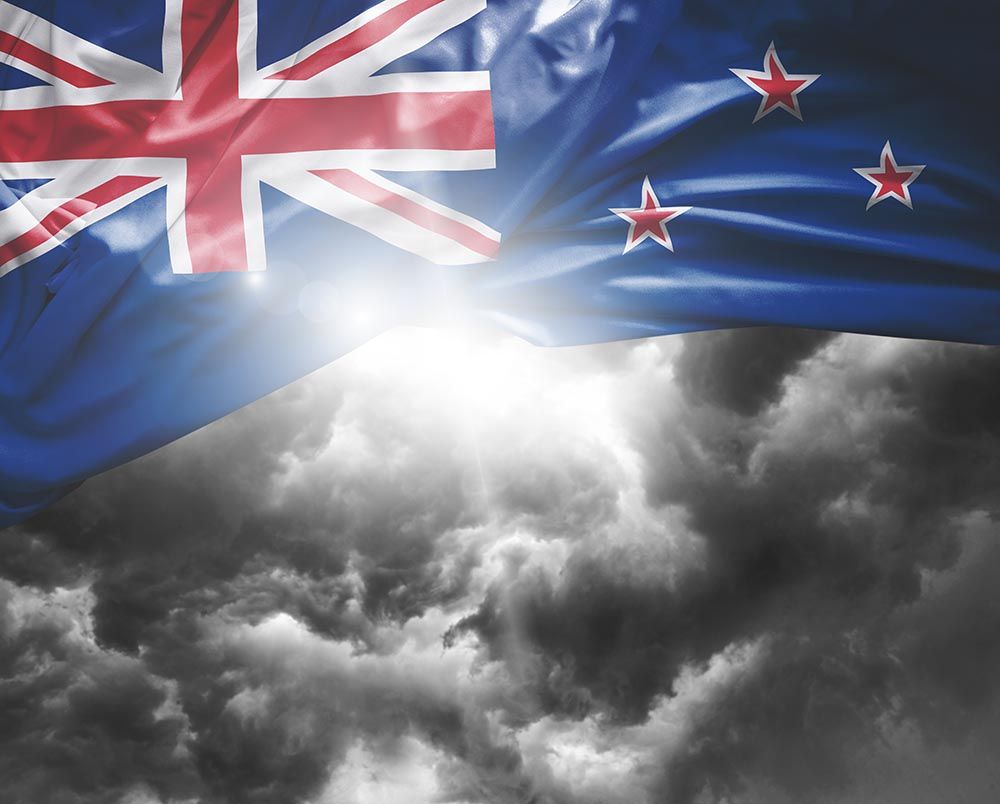New Zealand Dollar Forecasts Lowered at BMO but Direction is Higher from Here
- Written by: James Skinner
-
-NZD weakens Friday but BMO suggests dark days are over.
-NZD eyes support as oil tops out, agricultural commodities bottom.
-NZD to get further lift from gradual improvement in RBNZ outlook.

© Filipe Frazao, Adobe Stock
The New Zealand Dollar weakened again Friday but its days in the proverbial dog box are nearly over, according to analysts at BMO Capital Markets, whose mid-year currency forecasts suggest the Kiwi Dollar will now enjoy a steady recovery into the New Year.
New Zealand's Dollar has fallen by 4.7% against the US Dollar this year and by 2.2% against the Pound as the Kiwi interest rate outlook has deteriorated, key agricultural commodity prices have fallen and the market's appetite for 'risk currencies' has suffered in line with an increase in uncertainty over the outlook for international trade.
However, the BMO team says a rebound in domestic inflation later this year could repair some of the damage done to the Kiwi interest rate outlook back in the first-quarter while a recovery in food prices could also soon provide a lift to the fundamental value of New Zealand's currency.
"As an oil importer and agricultural commodity exporter, New Zealand’s commodity terms of trade were hammered in Q2. However, agricultural commodity prices may have found a bottom in early July," says Greg Anderson, global head of FX strategy at BMO Capital Markets, in the bank's mid-year forecast update.
After rising sharply in the first-quarter, the Global Dairy Trade price index has fallen from 1,030 in April to a low of 986 in July. This move was driven by broad based declines in the price of whole milk powder, which is New Zealand's most important export, as well as milk fat, butter, cheddar and skim milk powder.
New Zealand's goods exports are all agricultural commodities while its largest imports are energy goods linked to oil and gas prices. Adverse changes in the prices of import and export goods have seen more New Zealand Dollars sold on international markets at the same time as less Dollars are being bought during recent months.
Anderson and the BMO FX team suggest in their half-year forecast update that these trends could go into reverse during the second half of the year, which would offer some support to the Kiwi Dollar. They also flag the prospect of an improvement in the Reserve Bank of New Zealand (RBNZ) interest rate outlook.
"China is New Zealand’s biggest trade partner, but RBNZ officials manage policy with one eye on the RBA and AUDNZD. We think the RBNZ will tighten at about the same time as the RBA (Feb-May 2019). New RBNZ Governor Orr left the door open for tightening by attaching current policy to the assumption that inflation will stay below 2.0%," Anderson writes.
The RBNZ has held its interest rate at a record low of 1.75% ever since late 2016, citing below target inflation and risks to the economy that have threatened to push the consumer price index even further below the midpoint of the 1% to 3% inflation target. It told markets in June that Kiwi rates will remain at record lows for a "considerable period of time".
That has pushed Kiwi government bond yields lower at a time when yields of other countries' government bonds are rising because their central banks are flirting with the idea of raising interest rates. The US Federal Reserve, Bank of Canada and Bank of England are actually raising their interest rates.
This means that investors are incentivised to sell Kiwi Dollars and to buy the greenback in order to invest in the American bond market rather than vice versa. This is the opposite of how the so called carry trade, which has traditionally propped up the Kiwi relative to its international peers, used to work.
Friday pricing in interest rate derivatives markets, which enable investors to protect themselves against changes in interest rates while providing insight into monetary policy, implied a 1.73% New Zealand interest rate on February 13, 2019, which coincides with the February RBNZ meeting.
This could be taken to mean the market is flirting with the idea the RBNZ may need to cut its interest rate next, rather than raise it. Incidentally, governor Orr warned in June the next move in the cash rate could be either "up or down". Therefore, if markets were to become more confident during the months ahead about pricing in an interest rate rise for early 2019 then the New Zealand Dollar might receive a considerable boost.
Changes in interest rates, or hints of them being in the cards, are only normally made in response to changes in inflation but impact currencies because of the push and pull influence they have on international capital flows and their allure for short-term speculators.
Anderson and the BMO FX team forecast the NZD/USD rate will rise to 0.71 by year end and 0.73 before the end of March 2019, which represent downgrades from earlier forecasts of 0.77 and 0.78 respectively although they still imply upside from the Friday's 0.6729 level.
The Pound-to-New-Zealand-Dollar rate is forecast to fall from 1.95 Friday to 1.90 by year-end, before rising back to 1.91 by the end of March 2019.
These numbers are actually upgrades to earlier forecasts that the Pound-to-Kiwi rate would sit at 1.94 by year-end and rise to 1.97 by March 2019, although they owe themselves more to a deteriorating outlook for Pound Sterling than any recent improvement in the Kiwi Dollar's prospects.
Advertisement
Get up to 5% more foreign exchange by using a specialist provider to get closer to the real market rate and avoid the gaping spreads charged by your bank when providing currency. Learn more here



